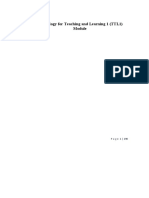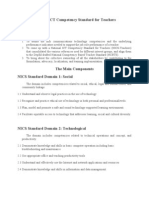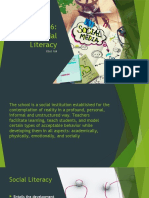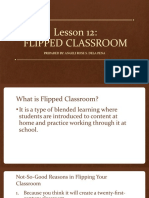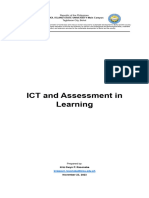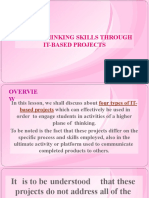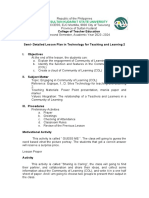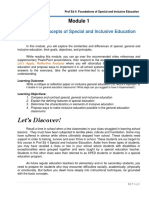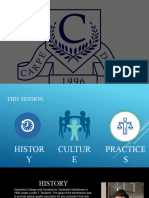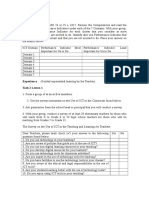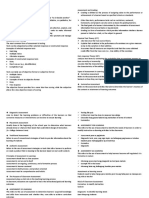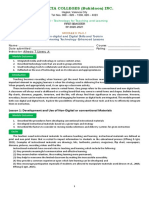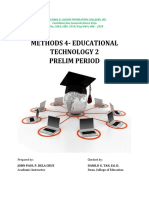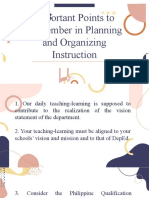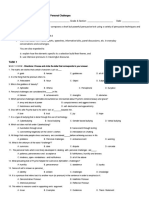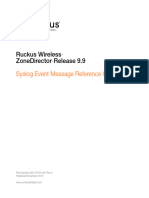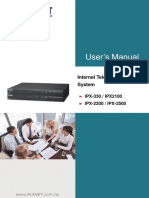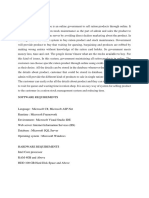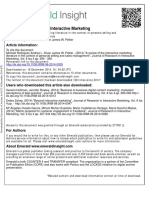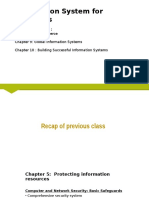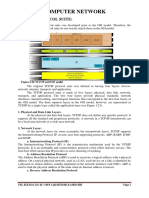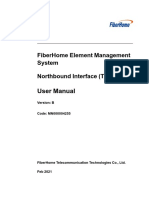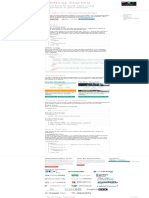Computers as Information and Communication Technology
“But the evolving pace of innovation in today's Information Age is so dynamic that within the first decade of the 214'
century, computer technology in education has matured to transform into an educative information and
communication technology (ICT) in education.”
In the Educational Technology Course 1 the role of the computer in education was well dismissed. It was
pointed out that the advent of the computer is recognized as the third revolution in education. The first was the
invention of the ,printing press; the second, the introduction of libraries; and the third, the invention of the
computer, especially so with the advent of the microcomputer in 1975. Thus emerged computer technology in
education.
Through computer technology, educators saw the amplification of learning along computer literacy. Much
like reading, the modern "student can now interact with computer messages, even respond to questions or
to computer commands. Again like writing, the learner can form messages using computer language or
program.
Soon computer-assisted instruction (CAI) was introduced using the principle of individualized learning through
a positive climate that includes realism and appeal with drill exercises that uses color, music and animation.
The novelty of CAI has not waned to this day especially in the basic education level as this is offered by
computer-equipped private schools. But the evolving' pace of innovation in today's Information Age is so
dynamic that within the first decade of the 21" century, computer technology in education has matured to
transform into an educative information and communication technology (ICT) in education.
Uses of computer as ICT in education
Communication Media THE PC Audiovisual Media
(internet) (multimedia)
E-mail (text and video) text, sound graphics,
Chat rooms chart, photos
Blog sites PowerPoint presentations
News services (print, video clip) CD, VCD, DVD PLAYER
Music/movie/television room CD, VCD, DVD PLAYER
Educational software
(internet)
Educational websites
Software’s, courewares
Schools registration/records
accounting
THE PERSONAL COMPUTER (PC) AS ICT
Until the nineties, it was still possible to distinguish' between instructional media and the educational
communication media.
Instructional media consist of audio-visual aids that served to enhance and enrich the teaching-learning process.
Examples are the blackboard, photo, film and video.
On the other hand, educational communication media comprise the media of communication to audiences including
learners
using the print, film, radio, television or satellite means of
communication. For example, distance learning were implemented using correspondence, radio, television or the
computer satellite system.
Close to the turn of the 21st century, however, such a distinction merged owing to the advent of the microprocessor,
also known as the personal computer (PC). This is due to the fact that the PC user at home, office and school has before
�him/her a tool for both audio-visual creations and media communication.
To illustrate, let's examine the programs (capabilities) normally installed in an ordinary modern PC:
Microsoft Office — program for composing text, graphics, photos into letters, articles, reports, etc.
Power-point — for preparing lecture presentations
Excel — foi• spreadsheets and similar graphic sheets
Internet Explorer — Access to the Internet
Yahoo or GoogleWebsites; e-mail, chat rooms, Blog sites, news service (print/video) educational softwares etc.
Adobe Reader — Graphs/photo composition and editing
MSN Mail/chat messaging
Windows media player — CD, VCD player
Cyberlink Power — DVD player
Windows, media player — Editing film/video
GameHouse — Video games
Basic concepts in IT
Information (Latin: idea, conception)
Knowledge communicated or received concerning a particular fact or circumstance
Quantity needed by a system to complete a task
Technology (Greek: systematic treatment)
The practical application of knowledge in a particular area (ex: Engineering, science, etc..)
The human process of applying resources to satisfy our wants and needs to extend our capabilities
IT (information technology) is a term that encompasses all forms of technology used to create, store, exchange,
and use information in its various forms.
It is a convenient term for including both telephony and computer technology in the same word. It is the
technology that is driving what has often been called “The Information Revolution."
Forms of Information
Images, Sound, Text , Numbers
Business data, voice conversations, still images, motion pictures, multimedia presentations, and other forms,
including those not yet conceived.
HISTORICAL PERSPECTIVE
Information and its uses have always been an integral part of mankind
Mankind initially utilized non-verbal communication methods to convey information (gestures, etc.)
The very first indication of information communication/storage/retrieval is considered to be through
cave drawings
Words and subsequently languages were later developed to efficiently communicate with each other
Information sharing across a wide audience was made possible by the invention of the printing press in
the early 1450’s by Johannes Gutenberg through the process of printing and distributing manuscripts
The printing press is widely thought of as the origin of mass communication. It marked Western
culture's first viable method of disseminating ideas and information from a single source to a large and
far-ranging audience (Jones telecom & multimedia encyclopedia)
Some significant developments in IT include:
The telegraph by Samuel Morse in 1837
The telephone by Alexander Graham Bell in 1876
Black and white TV in the 1940’s
The Atanasoff-Berry Computer (ABC) between 1937-1942
The ENIAC (first electronic digital computer) during WW-II
The transistor by Bell lab scientists, replacing the vacuum tube in 1947
The integrated circuit by Jack Kilby in the late 1950’s
ARPANET in the 1960’s
The personal digital computer in the 1970’s
The world wide web in 1991


